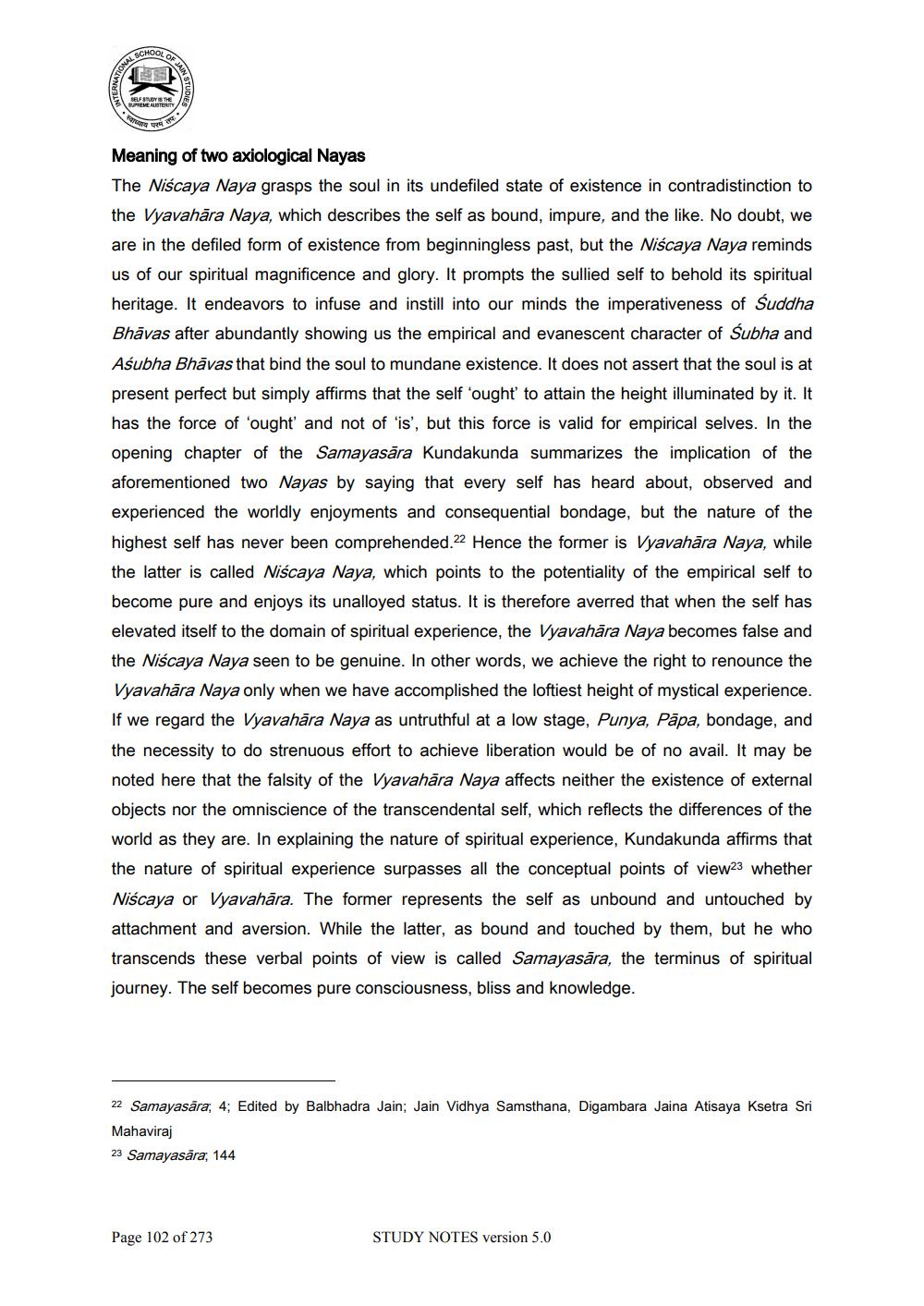________________
Meaning of two axiological Nayas The Niscaya Naya grasps the soul in its undefiled state of existence in contradistinction to the Vyavahāra Naya, which describes the self as bound, impure, and the like. No doubt, we are in the defiled form of existence from beginningless past, but the Niścaya Naya reminds us of our spiritual magnificence and glory. It prompts the sullied self to behold its spiritual heritage. It endeavors to infuse and instill into our minds the imperativeness of Suddha Bhāvas after abundantly showing us the empirical and evanescent character of Subha and Aśubha Bhāvas that bind the soul to mundane existence. It does not assert that the soul is at present perfect but simply affirms that the self 'ought to attain the height illuminated by it. It has the force of 'ought' and not of 'is', but this force is valid for empirical selves. In the opening chapter of the Samayasāra Kundakunda summarizes the implication of the aforementioned two Nayas by saying that every self has heard about, observed and experienced the worldly enjoyments and consequential bondage, but the nature of the highest self has never been comprehended.22 Hence the former is Vyavahāra Naya, while the latter is called Niscaya Naya, which points to the potentiality of the empirical self to become pure and enjoys its unalloyed status. It is therefore averred that when the self has elevated itself to the domain of spiritual experience, the Vyavahāra Naya becomes false and the Niscaya Naya seen to be genuine. In other words, we achieve the right to renounce the Vyavahāra Naya only when we have accomplished the loftiest height of mystical experience. If we regard the Vyavahāra Naya as untruthful at a low stage, Punya, Pāpa, bondage, and the necessity to do strenuous effort to achieve liberation would be of no avail. It may be noted here that the falsity of the Vyavahāra Naya affects neither the existence of external objects nor the omniscience of the transcendental self, which reflects the differences of the world as they are. In explaining the nature of spiritual experience, Kundakunda affirms that the nature of spiritual experience surpasses all the conceptual points of view23 whether Niscaya or Vyavahāra. The former represents the self as unbound and untouched by attachment and aversion. While the latter, as bound and touched by them, but he who transcends these verbal points of view is called Samayasāra, the terminus of spiritual journey. The self becomes pure consciousness, bliss and knowledge.
22 Samayasara, 4; Edited by Balbhadra Jain; Jain Vidhya Samsthana, Digambara Jaina Atisaya Ksetra Sri Mahaviraj 23 Samayasara, 144
Page 102 of 273
STUDY NOTES version 5.0




